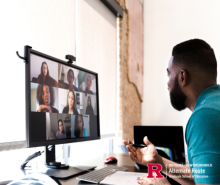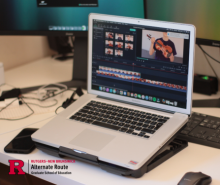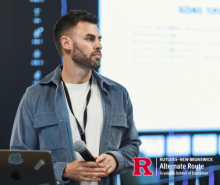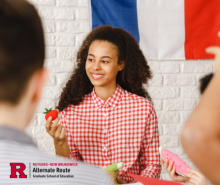11 Articles to Help New Teachers Build Inclusive Classrooms for Special Education Students
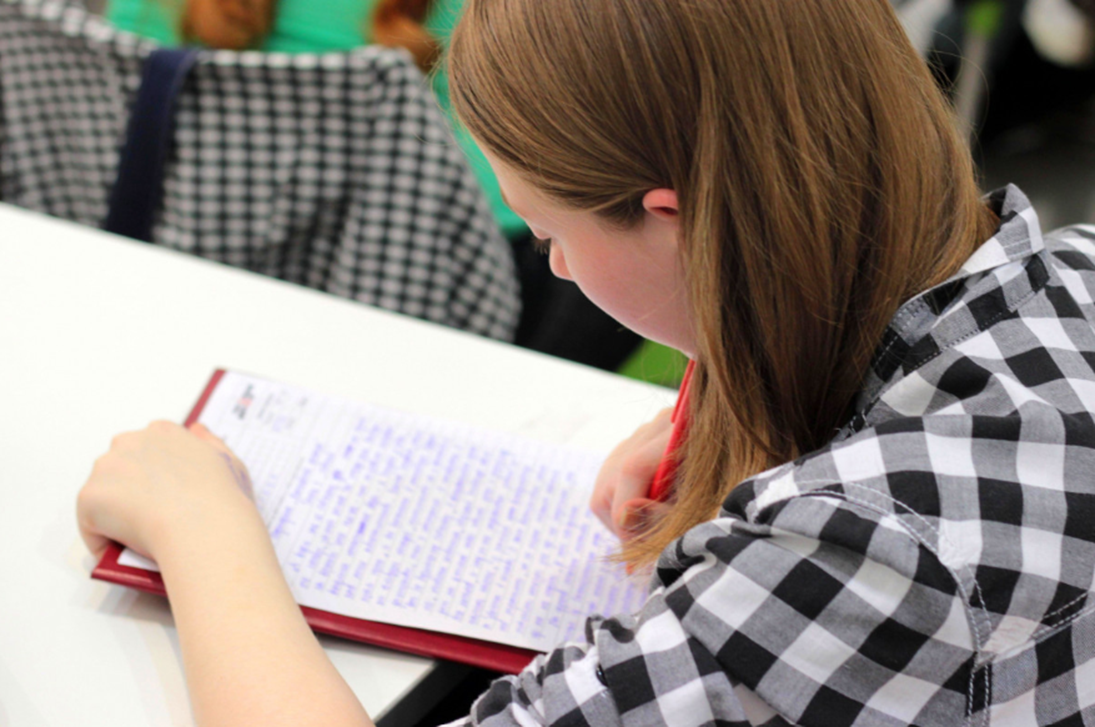
Every parent wants to see their child excel in school. Regardless of any distinguishing demographic factors, parents share a common desire for their children to thrive academically and socially. Unfortunately, desire alone does not always result in access to school experiences that ensure appropriate engagement in academic and social offerings.
Students with disabilities, in particular, face considerable challenges when it comes to their education rights despite their protections under the Individuals with Disabilities Education Act (IDEA), the federal special-education law that requires the provision of free and appropriate public education. Adopted in 1975, IDEA requires, among other things, that schools educate students with learning disabilities in classrooms with their general education peers as much as possible. This arrangement, known as the Least Restrictive Environment (LRE), supports their socialization and access to the general curriculum.
There are a variety of ways schools might achieve compliance with LRE expectations, ranging from separate classrooms and resource rooms to placements in general education classrooms with supplemental instruction and full inclusion where general education teachers must implement accommodations outlined in a student's Individual Education Plan (IEP).
The 2020-21 data published by the National Center for Statistics (NCES) shows 7.2 million students are receiving special education services, with the majority of them spending 80 percent or more of their time in classrooms taught by general education teachers.
With this level of mainstreaming, it is a professional imperative that all teachers learn to navigate their teaching responsibilities for these unique learners. Veteran and new teachers alike are expected to understand their students’ learning disabilities and make the appropriate accommodations. That’s why new teachers enrolled in with Rutgers Alternate Route invest time identifying and studying research-based practices and other resources that help their special education students excel.
The following are 11 articles that new teachers enrolled with Rutgers Alternate Route have found helpful to their goals of creating an inclusive classroom for students with learning disabilities. We hope they will help other teachers who are looking to build supportive learning environments in which all students can thrive.
Teaching Strategies for Students with ADHD: Ideas to Help Every Child Shine
Chris A. Zeigler Dendy, M.S.
In this article, the author provides easy-to-implement instructional strategies that teachers can use for students with ADHD, behavior management ideas, accommodation considerations and communication tips. Jhasmany S., who contributed to the article, commented that he once heard teachers should allow extra time for ADHD students and this article helped him learn the rationality behind it.
Using Art to Help Students Find Their Calm
Lori Desautels
This article bridges the research on students with disabilities and Social-Emotional Learning (SEL) to make the case that creative processes like drawing and coloring foster self-regulation while also helping students express themselves. Erin D., who contributed this article says, "Guiding students to evaluate their feelings in class helps so much with student engagement and behaviors because the outlet is the objective of the lesson and there is no right or wrong answer in their artistic expression."
Specific Learning Disability
do2learn
While this is not exactly an article, it's chock full of great information that can assist general education teachers serving special education students. Organized by headers that categorize the numerous tips, teachers can quickly scan through the list of ideas for helping students read in their content area, perform writing tasks, build math skills, and more. Jaslin S., who provided this resource, plans to use many of the strategies she read about including "providing models, images, graphic organizers, and giving large print or headphones to those with learning disabilities and even giving them the option to have their peer write down their dictated response or draw a picture instead."
ADHD and Classroom Challenges
Jeanne Segal, Ph.D. and Melinda Smith, M.A.
The authors of this article have clearly spent a lot of time working in classrooms with ADHD students as the guidance they provide is super-specific. They begin the article with very precise behaviors a teacher might observe in their ADHD students and then share step-by-step suggestions for how teachers should handle a range of decisions from where to seat students to how to engage them during questioning segments of lesson. Theatre teacher Tom Z. described the article as interesting and helpful for keeping ADHD students on task. He wrote, "I plan on pulling a number of the ideas and integrating them into my classroom for my students with learning disabilities."
Types of Learning Disabilities
Learning Disabilities Association of America
More of a website than an article, this resource highlights the breadth of student challenges that are classified under the term learning disabilities. Some students may have difficulty understanding numbers and learning math facts while others may have problems with language and speech. Still, some students may have a combination of these challenges. This resource unpacks individual learning differences and offers guidance for addressing them in the classroom. Qinghong L. teaches Chemistry and consults this resource to help her understand the type of learning disabilities her students have. She explained that knowing the students' difficulties helps her find the best methods for communicating with them and engaging them in learning.
How to Modify for Special Education
Kristina Scully
This is a blog article written by a special education teacher who now works as a curriculum specialist in her district and manages an independent website with a blog dedicated to advancing student SEL and executive functioning. It's a quick read focusing on modification strategies specifically for independent work such as assessment, homework, or in-class assignments. Ninth-grade English teacher Orrieann F. shared this article, noting that it offers really easy ways to modify any assignment. Now, along with her co-teacher who is an experienced special education teacher, Orrieann has created an inclusive environment that offers everyone -- students with IEPs and students without -- modifications and accommodations. She tells her students, “If you feel like you need it today, use them. If not, you don't have to.”
Dispelling Myths Around Learning Disabilities
Youki Terada
Many teachers believe that students with learning and attention issues lack the aptitude for complex subjects or come from poorly managed homes. This article seeks to disrupt those misconceptions using research from the National Center for Learning Disabilities and Understood. It extracts important highlights from the report and compels teachers to look past student learning disabilities and focus on nurturing the many strengths they possess. World Language teacher Vincent B. used ideas from this article to support a special education student in his Italian class. After realizing that the student loved The Price is Right, he homed in on the student's interest and designed lessons that involved playing the popular daytime television game to build vocabulary and practice speaking in Italian.
Students with Disabilities and the Core Arts Standards: Guiding Principles for Teachers
Sharon M. Malley, Ed.D.
Art teachers are the focus of this 21-page document, however, teachers of all subject areas can benefit from the information in this guide. While outlining the responsibilities of art teachers, it emphasizes the importance of subject matter knowledge, general pedagogy skills, and teaching competencies for supporting special education students. Maintaining high expectations, using appropriate accommodations, and leveraging evidence-based practices are among the guiding principles featured in the document. Mary W., who teaches art to preschool and elementary school students, introduced this resource to her teaching peers. For her, it was a reminder that art is a great opportunity for students with learning disabilities to challenge themselves.
How To Set Up Science Stations In Your Classroom
iExploreScience
Student-centered learning is at the heart of this article. It's content-specific and aimed at helping science teachers integrate more student-led and hands-on experiences to promote self-direction, peer collaboration and the engagement of all learners, including those with learning disabilities. Middle school science teacher Lexie N. uses the ideas from this article to avoid an over-reliance on direct instruction. She discusses using a variety of instructional formats, giving her students choices and alternating among whole group activities, small group or independent work, and stations.
Learning Challenges Table with Questions, Accommodations, & Teaching Recommendations
Natalie Olinghouse
This handy table works as a type of self-assessment, helping teachers to identify areas of opportunity where additional inclusion efforts might be warranted. Teachers first select a learning challenge they have observed and then review the list of recommended accommodations. The table instructs them to highlight accommodations they are already making for students and take note of underutilized practices. Many teachers learn that they regularly use accommodations and instructional strategies recommended for reaching students with learning disabilities as part of their regular teaching practice. This table exercise reveals their opportunity areas, which is exactly why high school English teacher Arielle B. thought it was worth sharing. She explained, "It made me think about what it is I already do in my teaching practice...[and] helped me consider what to bring into my practice."
Chunking
Accommodation Central
Experienced teachers of ADHD students recommend making learning tasks more manageable by breaking them into smaller steps or parts that students can understand and perform more easily. This practice is known as chunking. The author of this resource suggests seven actions new teachers can take to implement chunking in their classrooms. Resource contributor Caitlyn B. teaches fourth grade and has several students diagnosed with ADHD. She observed, "They have a hard time sitting still, focusing, completing homework, etc. By incorporating the suggestions like ... chunking tests or assignments I feel that I will see a great improvement in my students' school day."
If you’re considering following your dream of teaching, Rutgers Alternate Route can offer you the support and training you need to succeed. Be sure to follow Rutgers Alternate Route on Twitter and sign up for Alternate Route’s monthly newsletter for more information and stories from the field of education.

 Heather Ngoma has over 25 years of experience collaborating with educators across New Jersey to drive education innovation. She currently serves as the Director of the Rutgers-GSE Alternate Route Program in the Department of Learning and Teaching, a program which helps career changers, recent college graduates, and other aspiring education professionals become licensed teachers in New Jersey. Follow her on Twitter @heatherngoma.
Heather Ngoma has over 25 years of experience collaborating with educators across New Jersey to drive education innovation. She currently serves as the Director of the Rutgers-GSE Alternate Route Program in the Department of Learning and Teaching, a program which helps career changers, recent college graduates, and other aspiring education professionals become licensed teachers in New Jersey. Follow her on Twitter @heatherngoma.
